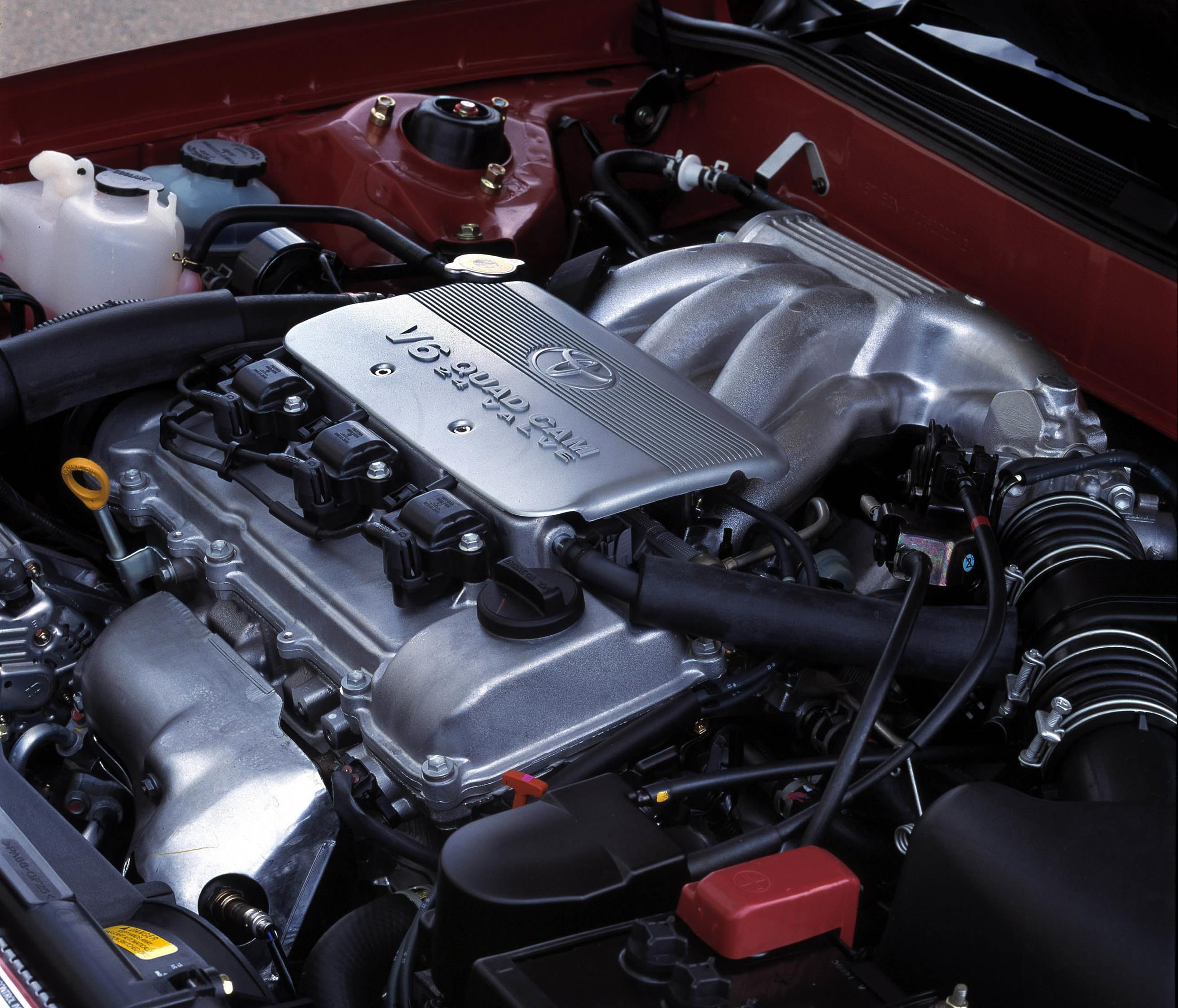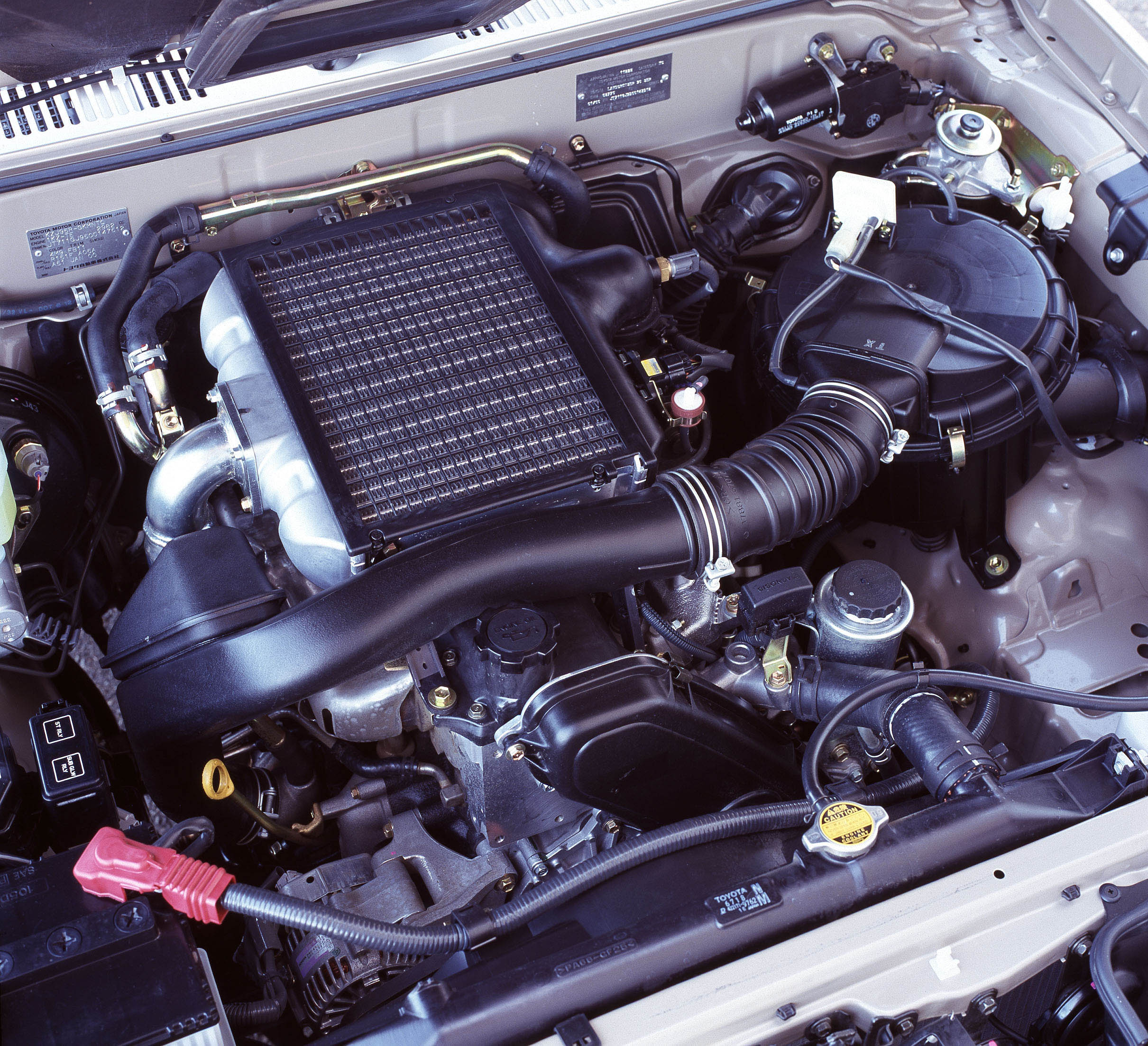Introduction
The LS1 or ‘Generation III’ was a 5.7-litre pushrod V8 petrol engine with all-aluminium construction that was produced by General Motors (GM) and available in Holden and HSV vehicles from 1999 to 2006. With its 99.0 mm bores and 92.0 mm stroke, the LS1 engine had a capacity of 5665 cc (345.69 cubic inches).
It is understood that GM Powertrain decided on a pushrod design following a blind test conduct at GM’s Milford Proving Grounds in 1992. In this test, the low-rev performance of the pushrod engine was preferred to that of a prototype double overhead camshaft (DOHC) V8 engine. However, the decision for a pushrod design was also likely motivated by a desire to minimise development and production costs. Furthermore, the LS1 was more widely used in pick-up trucks than cars and, for the former, the simplicity and durability of a pushrod design was seen as preferable to overhead camshafts.
LS1 block
The LS1 had a deep-skirt block that was cast from 319 aluminium (heat-treated to the T5 standard) using a semi-permanent mould technique which was a cross between die-casting and sand-casting); casting was done by Montupet Corporation. Furthermore, gray-iron cylinders liners were centrifugally-cast into the block at the foundry.
The LS1’s 111.76 mm cylinder spaces allowed for cooling passages between adjoining cylinders and, at the top of the block, a structural die-cast valley cover connected the cylinder banks for greater rigidity. Due to its aluminium construction, the LS1 block weighed 48.85 kg, 45.1 kg lighter than its LT1 predecessor and around 40 kg lighter than the cast-iron 5.0-litre Holden V8 engine.
LS1 internals
The LS1 engine had a nodular iron crankshaft that was internally balanced and had variable radii undercuts and rolled fillet journals. The crankshaft was held in place by five main bearings each with six cross-bolted main bearing caps that were formed from powdered metal (four vertical M10 and two horizontal M8 bolts for each cap). The cylinder head and bearing cap bolt threads were also roll-formed for strength.
Because LS1’s cylinder banks had a 24.1 mm offset, the engine had flat connecting rods and a single piston/rod assembly – the sintered and forged PF1159M steel connecting rods had ‘cracked’ big ends and 9 mm bolts. Finally, the pistons were made from cast eutectic aluminium and had a closed skirt, strutless design; each had a mass of 434 g and compression height of 34 mm.
LS1 cylinder head
Designed by Ron Sperry, the LS1 cylinder head was produced from sand-cast 356 aluminum which underwent T6 heat-treatment. Significantly, the intake port provided the charged air with a straight passage to the intake valve and the LS1 had a 15 degree valve angle from vertical, i.e. the angle between the cylinder bore centerline and valve stem centerlines.
Produced by Dupont, the intake manifold made from ‘Nylon 66’ material (a mixture of Nylon and glass fibre reinforcement) and weighed 3.8 kg. The manifold used a 10 litre plenium chamber and equal length, 260 mm long intake runners.
LS1 camshaft
The LS1 engine had a single camshaft that was machined out of 5150 steel billet, rifle-drilled (also known as a ‘hollow’ camshaft) to reduce its mass and had induction-hardened lobes. The camshaft was driven by a 9.525 mm pitch full roller chain that did not use a tensioner, while the camshaft position sensor was positioned ahead of the rear bearing journal.
LS1 valvetrain
The LS1 engine had two stainless steel valves per cylinder (one intake and one exhaust) that were actuated by cast steel, needle bearing roller rocker arms which had a ratio of 1.7:1. Specifically,
- the intake valves had an 54.8 mm diameter;
- the exhaust valves had a 39.37 mm diameter;
- the valves had beehive-design valve springs made from Cr-Si 4.6 mm diameter round wire; and,
- the valves had polished 8 mm long stems.
The valves had roller hydraulic valve lifters and the centre-lines of the lifters, pushrods and valve stems were parallel.
LS1 lubrication
The LS1 engine had a cast aluminium oil pan which was part of the lower engine’s structure and contributed to the rigidity of the cylinder case rigidity. Lubrication was provided via a gerotor oil pump that was driven off the front crankshaft.
LS1 injection and ignition
The LS1 had electronic, sequential port fuel injection (SFI) and each cylinder had its own AC Delco Multech injector to meter fuel; a mass airflow (MAF) sensor was also used to regulate air supply. Furthermore, each cylinder had its own ignition coil, coil driver assembly and short plug wire that connected to a platinum-tipped spark plug. For greater swirl of the air/fuel mix around the spark plug, a sharp fillet radius was added to the inlet side of the combustion chamber.
For the LS1 engine, the induction system – i.e. the intake manifold, throttle body, injectors, stainless steel fuel rails and wiring – was assembled by an external supplier, shipped to the engine plant in one piece and bolted in place. Fuel pressure was regulated to 400 kPa and the injectors, fired sequentially, were rated to a flow of 3.6 grams per second. Rather than the 1-8-4-3-6-5-7-2 firing sequence of its predecessors, the LS1 firing order of 1-8-7-2-6-5-4-3 provided better idle stability and less vibration.
For its use in the C5 Corvette, the LS1 was the first GM engine to have electronic throttle control (also known as drive-by-wire). The LS1 is sometimes referred to as having an ‘Integrated Air and Fuel Module’ (IAFM) due to the arrangement of the intake manifold, sequential port injection system and electronically-controlled throttle. For its Holden and HSVs applications, however, the LS1 engine did not have electronic throttle control.
When offered in Australia in the VT.II Commodore, the LS1 had a compression ratio of 10.1:1 and a maximum engine speed of 6200 rpm.
Holden LS1 upgrades
During its use in the Holden Commodore, the LS1 engine benefited from a series of changes that increased power and torque –
- VX Commodore: increased-flow inlet manifold, higher dynamic range fuel injectors, new PCM software and improved idle quality;
- VY.I Commodore: twin exhaust system introduced;
- VY.II Commodore: higher-output tune; and,
- VZ Commodore: introduction of electronic throttle control and revised engine calibration, induction and exhaust.
| RPO | Engine | Peak power | Peak torque | Models | Years |
|---|---|---|---|---|---|
| LS1 | 5.7-litre petrol V8 | 220kW at 5000rpm | 446Nm at 4400rpm | VT.II Commodore, VT.II Calais |
1999-00 |
| WH Statesman, WH Caprice |
1999-03 | ||||
| 225kW at 5200rpm | 460Nm at 4400rpm | VX Commodore, VX Berlina, VX Calais, VU Ute |
2000-02 | ||
| V2.I Monaro | 2001-02 | ||||
| 225kW at 5200rpm | 460Nm at 4400rpm | VY.I Berlina VY.I Calais, VY.I One Tonner S |
2002-03 | ||
| VY.II Crewman | 2003-05 | ||||
| 235kW at 5200rpm | 465Nm at 4400rpm | VY.I Commodore SV8 and SS, VY.I Ute S and SS, V2.II Monaro |
2002-03 | ||
| VY.II Berlina, VY.II Ute S, VY.II One Tonner S |
2003-04 | ||||
| 245kW at 5600rpm | 465Nm at 4000rpm | VY.II Commodore SV8 and SS, VY.II Calais, VY.II Ute SS, WK Caprice |
2003-04 | ||
| 245kW at 5600rpm | 465Nm at 4400rpm | V2.III Monaro | 2003-04 | ||
| 235kW at 5200rpm | 460Nm at 4000rpm | WK Statesman | 2003-04 | ||
| VY Adventra | 2003-05 | ||||
| 235kW at 5600rpm | 460Nm at 4000rpm | VZ Berlina, VZ Calais, VZ One Tonner, VZ Crewman |
2004-05 | ||
| 245kW at 5600rpm | 465Nm at 4800rpm | WL Statesman | 2004-05 | ||
| 250kW at 5600rpm | 470Nm at 4000rpm | VZ Commodore SV8 and SS, VZ Ute SS |
2004-05 | ||
| 250kW at 5600rpm | 470Nm at 4800rpm | WL Caprice | 2004-05 | ||
| VZ Adventra | 2005-06 | ||||
| 260kW at 5600rpm | 500Nm at 4000rpm | VZ Monaro | 2004-05 |
HSV LS1 upgrades
When first introduced in HSV’s VT range, the LS1 engine was more powerful due to its 57 mm stainless steel big bore exhaust extractors which fed into 1.8-litre low-back pressure catalytic converters and low-restriction HSV mufflers. During its production, upgrades for the ClubSport, Senator and Maloo included the following –
- HSV VX: increased-flow inlet manifold, higher dynamic range fuel injectors and new PCM software;
- HSV Y Series I: revised engine calibration; and,
- HSV Y Series II: redesigned intake, extractors and engine calibration. Specifically, the lower air box was redesigned with a bigger opening and the ‘zip’ tube (which directed air into the air box) had its ‘bellows’ section replaced with a tube that had less airflow resistance. Furthermore, new primary 44 mm pipes (previously 41 mm) were matched to the exhaust ports, the four-into-one collectors were redesigned and a 63 mm down pipe was introduced (previously 57 mm).
| RPO | Engine | Peak power | Peak torque | Models | Years |
|---|---|---|---|---|---|
| LS1 | 5.7-litre petrol V6 | 250kW at 5600rpm | 473Nm at 4000rpm | HSV VT.II ClubSport, HSV VT.II Senator, HSV VT SV99, HSV WH Grange |
1999-00 |
| 255kW at 5600rpm | 475Nm at 4000rpm | HSV VX ClubSport, HSV VX Senator, HSV WH Grange |
2000-02 | ||
| 260kW at 5600rpm | 475Nm at 4000rpm | HSV Y-Series I ClubSport, HSV Y-Series I Senator, HSV Y-Series I Maloo |
2002-03 | ||
| 285kW at 5600rpm | 510Nm at 4800rpm | HSV Y-Series II ClubSport, HSV Y-Series II Senator, HSV Y-Series II Maloo, HSV WK Grange |
2003-04 | ||
| 270kW at 5700rpm | 475Nm at 4000rpm | HSV V2 Coupe 4 | 2004 | ||
| HSV Z-Series Coupe 4 | 2004-05 | ||||
| 270kW at 5700rpm | 475Nm at 4000rpm | HSV Y-Series Avalanche | 2003-05 | ||
| 270kW at 5700rpm | 475Nm at 4000rpm | HSV Y-Series Avalanche XUV | 2004-05 | ||
| 255kW at 5600rpm | 475Nm at 4000rpm | HSV V2.I GTO Coupe | 2001-03 | ||
| 260kW at 5600rpm | 475Nm at 4000rpm | HSV V2.II GTO Coupe | 2003 | ||
| 285kW at 5800rpm | 510Nm at 4800rpm | HSV V2.III GTO Coupe | 2003-04 |
HSV LS1 C4B engine
Based on the LS1, the C4B engine was developed by Callaway. Compared to the LS1 engine, changes included:
- CNC-ported cylinder heads;
- A big bore CNC billet-machined throttle body;
- More aggressive camshaft;
- Remapped ECU;
- Upgraded valves and valve springs (including titanium valve spring retainers);
- A high-flow exhaust system;
- A lower compression ratio (9.95:1 compared to 10.1:1); and,
- Omission of the mass airflow (MAF) sensor.
The C4B engine was solely available with a heavy-duty six-speed T56 manual transmission and, for its use in HSV vehicles, the final drive ratio was 3.91:1.
| Code | Engine | Peak power | Peak torque | Models | Years |
|---|---|---|---|---|---|
| LS1 C4B | 5.7-litre petrol V8 | 300kW at 6000rpm | 510Nm at 4800rpm | HSV VT.II GTS | 2000 |
| HSV VX GTS | 2000-01 | ||||
| HSV VX Senator 300 | 2000-01 | ||||
| HSV VX SV300 | 2001-02 | ||||
| HSV Y-Series GTS | 2002-04 | ||||
| HSV V2 GTS Coupe | 2001-04 |





